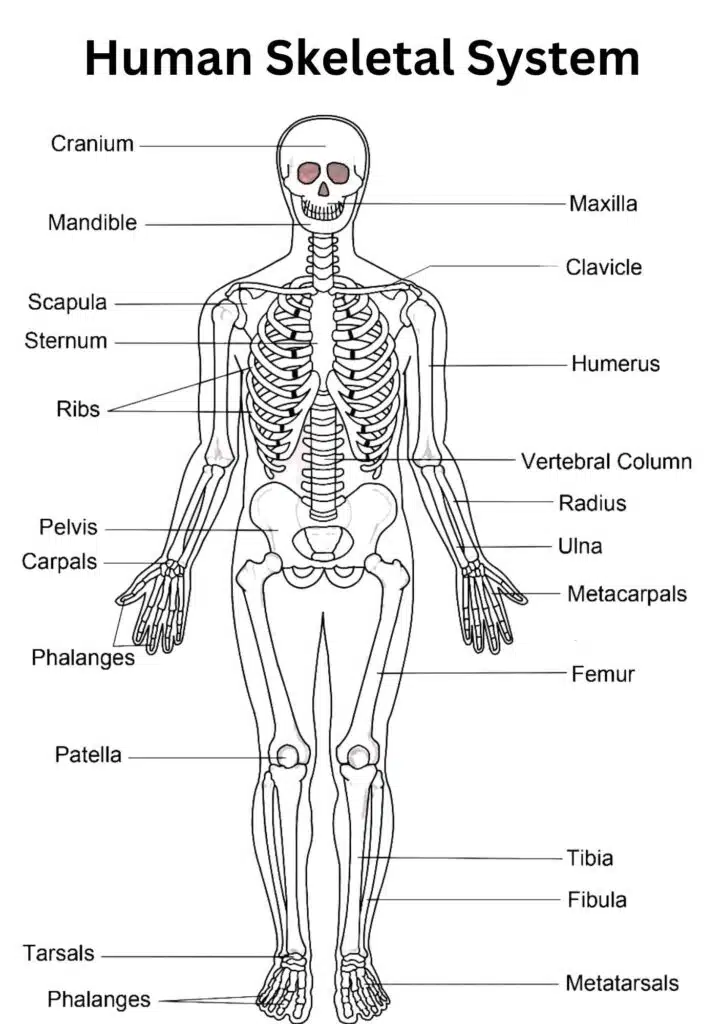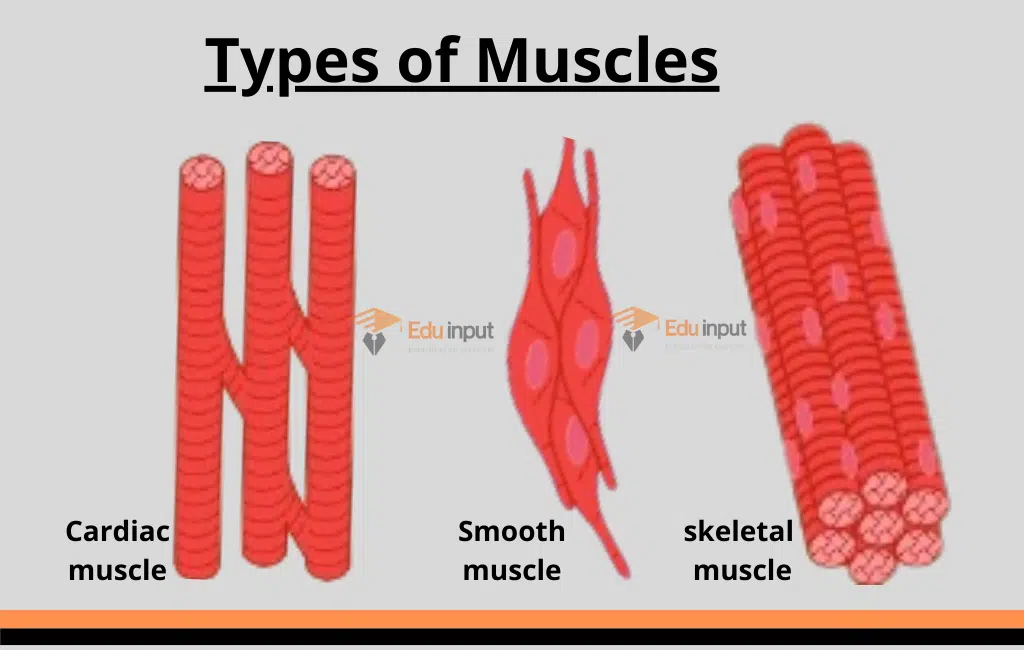Skeletal System-Definition, Composition, and Functions
The Skeletal system supports the body’s structure. It gives the body its shape, allows movement, makes blood cells, and provides protection for organs and minerals stores. The skeleton system is also referred to as the musculoskeletal system.
The framework is made up of many bones and cartilage. There is an intimate relationship between the parts of the skeleton and the bands of .
The central nervous system, which lies inside the skull and vertebral column, is protected by the bones and nerves. The anatomical features that protect the spinal cord are the cervical vertebrae, the skull, and the skull bones.
Composition of Skeletal system
The human skeleton is made up of many different parts that help you move. The bones are the most important part of the skeleton. They are made of a hard substance. The bones need to be strong enough to hold up your skin and muscles.

Bone
There are 206 bones in the human skeleton, It consists of:
Periosteum
Most of your bones are covered by the periosteum, which consists of blood vessels and nerves. It supplies bones with blood and gives them a sense of feeling. The periosteum is a tough covering outside of the bone.
Compact Bone
Below the periosteum is the compact bone. The bone is called cortical bone. It’s smooth, hard, and white. The main function of compact bone is to support and strengthen bones. There are some additional protective properties.
Spongy Bone
The inner layer of the bone is not as squishy as the outer layer. There are some small holes in it to hold blood. The bone density is not as dense as the compact bone.
The sponge-like bone is made up of plates and bars of bone, next to the small irregular cavities that contain red bone marrow. The blood supply to the canaliculi is provided by the central Haversian canal.
Cartilage
Cartilage is a flexible, soft material that covers the tips of your bones. It makes it possible for bones to move without rubbing against each other. The Cartilage that has worn away can be painful and can cause problems in your daily activities.
Joints
A joint is where the bones of the body come together. The point where two bones make contact is known as a joint.
Depending on the amount of movement allowed, joints can be classified by histologically as the dominant type of connective tissue. synovial, cartilaginous, and fibrous are the three joints that make up the body.
There are three different joint types. That are:
Immovable Joints
An Immovable joint is present where two or more bones are in close contact but they don’t let bones move. An example of an immovable joint is the bones of the skull.
Partly Movable Joints
The joints where the bones connect by hyaline cartilage or fibrocartilage are called slightly movable joints. A pair of ribs connect to the sternum by a pair of costal cartilages.
Movable Joints
A wide range of motion can be accomplished with moving joints. They’re also known as synovial joints. These joints have the ability to move in different directions. The knee joints, elbow joints, wrist joints, shoulder joints, hip joints, and ankle joints are some examples.
Functions of the Skeletal System
The skeletal system is an essential part of our body. Besides the obvious purpose of protecting us from injury, the skeletal system has many functions.
- Your skeleton supports your weight to help you move. Your joints, tissues, and muscles allow your body to move.
- Bones are an integral part of the body; they contain bone marrow, which produces red and white blood cells
- The skeletal system protects internal organs. skull bones shield your brain, ribs protect your heart and lungs, and your backbone protects your spine.
- Bones provide your body with minerals like calcium and vitamins D and E.
Latest Research About Skeletal System
- In a study, scientists investigated the effect of inhibiting the endocannabinoid system with rimonabant on metabolic alterations and skeletal muscle function in aged mice subjected to a high-fat high-sucrose diet. They found that rimonabant improved motor coordination and muscle strength, and reversed the obese phenotype without affecting skeletal muscle mass. [1]
- Scientists have created a simulation to determine the optimal parameters for Skeleton racing. It found that maximizing athlete and sled mass, optimizing aerodynamic drag, reducing ice friction, and a fast start can improve performance. The final outcome depends on athlete skill in finding the best trajectory. [2]
- Scientists describe the contributions of zebrafish to understanding skeletal biology. They highlight the genetic strengths and tools available for studying skeletal development and repair, as well as the unique insights into regeneration. Zebrafish will continue to be a valuable model for studying skeletal biology. [3]






Leave a Reply